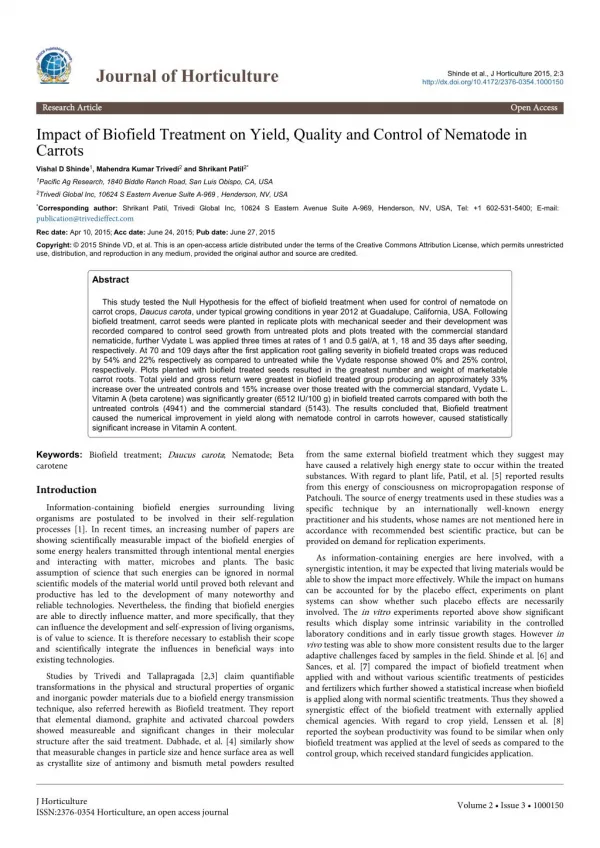Trivedi Effect - Impact of Biofield Treatment on Yield, Quality and Control of Nematode in Carrots
This study tested the Null Hypothesis for the effect of biofield treatment when used for control of nematode on carrot crops, Daucus carota, under typical growing conditions in year 2012 at Guadalupe, California, USA. Following biofield treatment, carrot seeds were planted in replicate plots with mechanical seeder and their development was recorded compared to control seed growth from untreated plots and plots treated with the commercial standard nematicide, further Vydate L was applied three times at rates of 1 and 0.5 gal/A, at 1, 18 and 35 days after seeding, respectively. At 70 and 109 days after the first application root galling severity in biofield treated crops was reduced by 54% and 22% respectively as compared to untreated while the Vydate response showed 0% and 25% control, respectively. Plots planted with biofield treated seeds resulted in the greatest number and weight of marketable carrot roots. Total yield and gross return were greatest in biofield treated group producing an approximately 33% increase over the untreated controls and 15% increase over those treated with the commercial standard, Vydate L. Vitamin A (beta carotene) was significantly greater (6512 IU/100 g) in biofield treated carrots compared with both the untreated controls (4941) and the commercial standard (5143). The results concluded that, Biofield treatment caused the numerical improvement in yield along with nematode control in carrots however, caused statistically significant increase in Vitamin A content. | Authors: Mahendra Trivedi, Dahryn Trivedi, Alice Branton, Gopal Nayak
★
★
★
★
★
66 views • 4 slides











